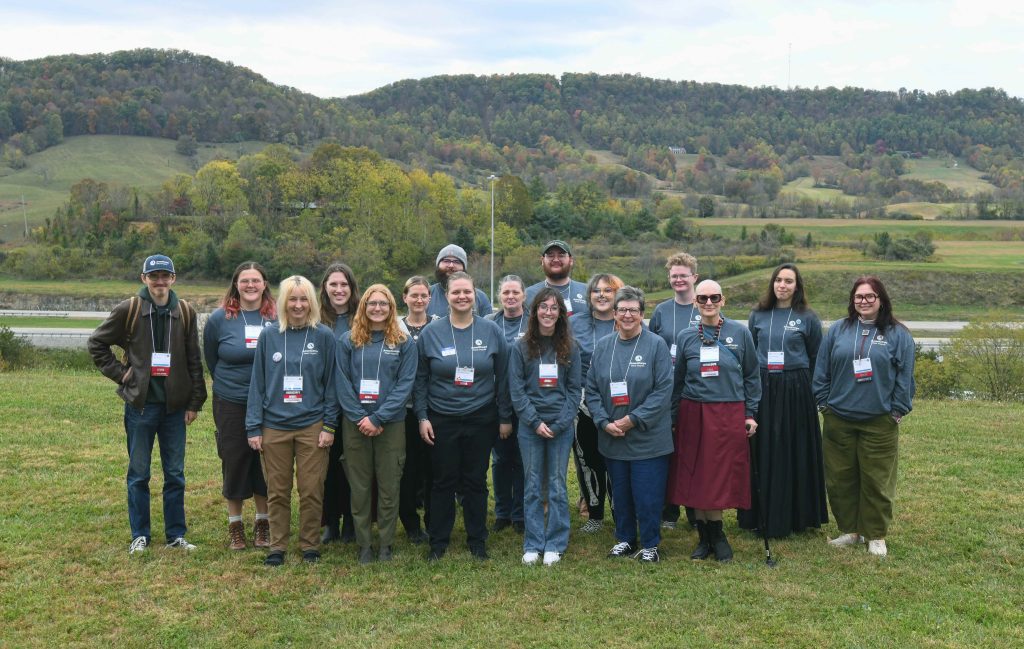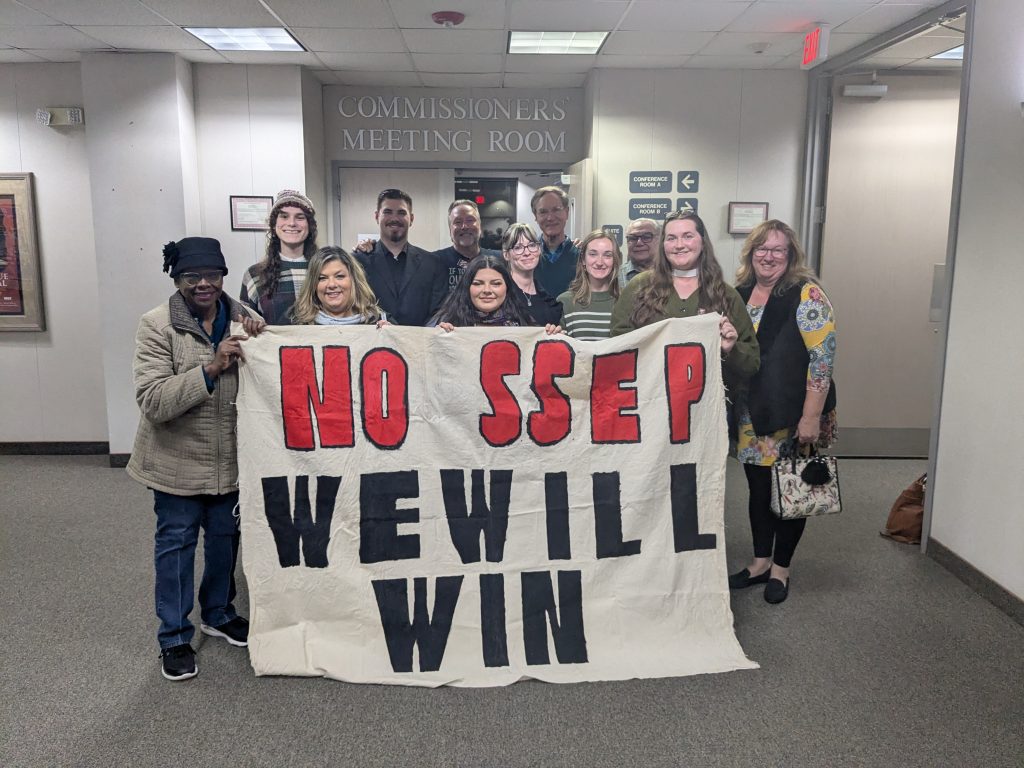Dorothy; Not in Kansas Anymore
Longtime coal miner Bernard Gibson can see what’s there and see what coming.
“It’s going,” Gibson said. “I can’t predict when and you can’t either. But it’s got to go.”
‘It’ is the fractured point on the southern face of Kayford Mountain near Dorothy, West Virginia where for the past year residents have monitored a constellation of cracks spreading across the point.
The West Virginia Department of Environmental Protection (DEP) has tried to calm fears of a catastrophic landslide, but geologist Loren Raymond, working with Appalachian Voices, Coal River Mountain Watch and residents of Dorothy, thinks a potentially devastating slide may be a real possibility.
Freda Williams, a longtime community activist in the state’s coalfields, cuts through the conflicting reports, rumors, suspicians and worst-case scenarios swirling around Dorothy by saying: “It’s not what’s known . . . it’s what’s not known that worries me.”
Everyone knows that Kayford Mountain has been mined extensively for over 100 years. Small pick and shovel operations, called punch mines, are scattered all over the mountain. From the 1940’s into the 1980’s large mechanized mines honeycombed miles of Kayford’s coal seams. Local people know that the abandoned mines are filled with water. They also know that some of the old mines have burned over the years. , and that a coal preparation plant pumped its liquid slurry waste into abandoned mines for at least six years.
In recent times both the Catenary and Princess Beverly coal companies have combined to strip 6,800 acres of Kayford Mountain’s surface, with more permits expected soon.
What no one knows for sure are the conditions inside the old abandoned deep mines that may be causing the mountain to break apart. Some scenarios are more likely than others, but the lack of accurate information – including what is not forthcoming from the DEP – continues to fuel the rumors around Dorothy.
Activist Larry Gibson discovered the hairline fractures in Kayford Mountain in the summer of 2002. The cracks cut across an unnamed point separated from Dorothy by a single steep slope. Gibson got a Charleston television station to come out and file a report on the cracks.
Dorothy resident Danny Thompson watched that report. “My wife said ‘where’s that crack at’,” Thompson said. “I said ‘it’s right behind the house; it’s straight behind it’.” Thompson and his wife went onto Kayford Mountain that August to see; vertical cracks abourt four inches wide were cutting down into the rock.
“I didn’t think that much about it, to be truthful,” Thompson said of that first look.
When Williams and Thompson went back with neighbors Roger Fraley and Tony Harris in December, those same cracks had spread to six to eight inches, and by April to 24 inches. More ominous still was a previously unnoticed set of curved cracks and a sinkhole that had appeared. Surrounding the hole was a concave crack reaching back into the mountain. The ground within the curve slumped down and away from the mountain. By March, 2003 some of the vertical cracks had grown to nearly 30 inches. Thompson went door to door in Dorothy to tell people about the threat. “If you hear anything, the only thing I can tell you is run,” he told them.
Williams arranged a meeting with the WVDEP and with their director of Mining & Reclamation Matt Crum, an assistant director and five uniformed field inspectors. At Crum’s request, Williams had invited and brought along only four other residents of the town. The group told the inspectors what they had seen, and their concerns about landslides and blowups. Blowups occur when water builds up in a mine until the pressure forces the outcrop to give way and water shoots out of the mountain and down the slope. Several blowups have gone off in the surrounding area in recent years; because the cracks have weakened the mountain residents fear a blowout is more likely and could precipitate a major landslide.
The inspectors, none of whom had seen the cracks, tried to calm their fears using maps and explaining technical aspects of the mountain’s geology. Because coal seams in Kayford Mountain naturally slope to the northwest, water should drain away from the mountain, they said. Bernard Gibson responded that the floor of a mine doesn’t slope consistently throughout the mountain, and the slope variations could mean “it’ll go this way, this way, maybe,” moving his hands in different directions. Thompson asked “how do they know that they don’t have a (roof) fall between here and there that’s got it blocked off?”
During the first week of June this year, two months after meeting with the residents, the DEP put out pink flagging around and across the cracks. Even though it quickly fell into the expanding cracks the DEP continues to say they do not pose a threat to the town below. Adding to that threat, the DEP has approved 712 acres – including the cracks – in a new mountaintop removal permit for Catenary Coal Company; blasting will begin at the north end of the permit and work south, exposing the cracks to prolonged additional blasting.
Working with Coal River Mountain Watch and Appalachian Voices, Williams has organized a series of community meetings to alert Dorothy residents. Over forty people attended the first meeting and Loren Raymond presented his findings at the second. Residents subsequently formed a committee to circulate petitions demanding action from the DEP and the federal Abandoned Mine Lands Program to stop blasting on Kayford. Thompson said some residents won’t sign a petition fearing a lawsuit or other retribution by the coal companies.
In the meantime, the DEP has filled the cracks with dirt and rocks.
“Only thing they did is put icing on the cake,” Thompson said. “They made it dangerous. If anybody goes up there and walks across that pile of dirt, it could be like quicksand if it breaks loose when they’re on it.”
From his house nearly two thousand feet below, former miner and coal operate Horace Robinson stares at the fractured point hovered above. “I sit and meditate about those cracks,” Robinson said; “and wonder what it’s going to do, if anything. He believes that state should stop permitting and blasting.
“We’ve got to stop em. I don’t know how, but we got to.”
Related Articles
Latest News

Leave a comment
Your email address will not be published. Required fields are marked *





Leave a Comment